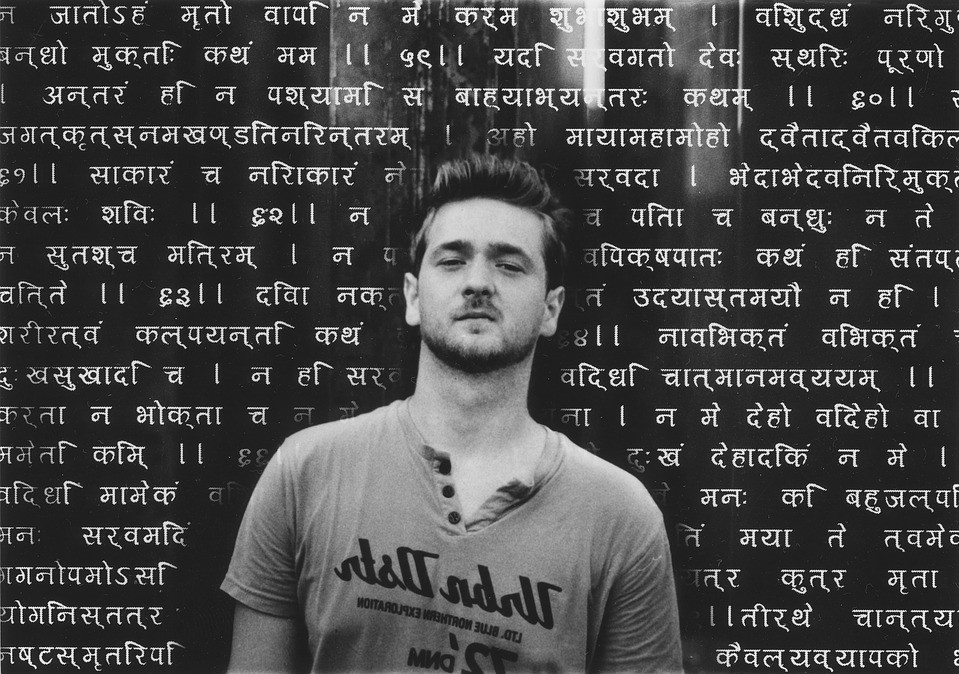Why is Sanskrit so popular? From Wikipedia: “The oldest Indo-European languages for which substantial written documentation exists, Sanskrit holds a prominent position in Indo-European studies. The body of Sanskrit literature encompasses a rich tradition of poetry and drama as well as scientific, technical, philosophical and religious texts. It continues to be widely used as a ceremonial language in Hindu religious rituals and Buddhist practice in the form of hymns and chants.”
Sanskrit, like Latin, has its charm in that it is said to be metrically the most perfect language ever written. Here’s a fun read about Sanskrit prosody. It is even said that some of the greatest verses of Sanskrit have the ignominy of being considered inferior because they were constructed. ‘Rasa’ or aesthetics in Sanskrit prescribe that for the language to be truly authentically experienced, a piece of prose or poem should do so through aesthetics and not through meter so much.
All this to say that the study of Sanskrit is said one of the most unique language learning experiences. The Vedas, Hinduism’s sacred texts, were written in Sanskrit. All yogic chants, meditation chants, and pranayama literature are Sanskrit-based. You know all you can about yoga and meditation and pranayama already. So how about learning a few common Sanskrit words, their etymology, significance, pronunciation, etc.? Perhaps you can throw them into conversation at a gathering!
- Ananda: Supreme state of bliss. From Ananda.org: “In yoga philosophy it is said that God is “sat chit ananda” (existence consciousness bliss). Paramhansa Yogananda adds that ananda is different from temporary joy that comes from sense pleasures such as eating, listening to music, and seeing beautiful things. It is also not a monotonous joy that is always the same. Ananda refers to a joy that “changes and dances itself in many ways to enthrall your mind and keep your attention occupied and interested forever”.”
- Ahimsa: The practice of non-violence and compassion. From Mindbodygreen.com: “Ahimsa isn’t simply the practice of refraining from violent words or actions, it’s also about abstaining from violent thoughts. Ahimsa is the total and complete absence of violence from one’s mind, body, and spirit. It’s not only about evading harmful deeds, but about lacking the capacity to engage in harmful thoughts whatsoever.”
- Om: Om literally means the original mantra, a primordial and universal utterance, said to resonate in nature through every living being. We have already covered it here on the blog.
- Aham: The awareness of the self or “I” or ego. From Yogapedia: “Aham is a Sanskrit term which means “self” or “I.” Aham Brahmasmi is a popular saying used in the Upanishads, the ancient philosophical texts of Hinduism. With Brahmasmi referring to Brahman, or the Absolute Reality, the saying may be translated to mean “I am Brahman.”
- Namaste: It means the divine in me sees or acknowledged the divine in you. From Yoga Journal: “The gesture Namaste represents the belief that there is a Divine spark within each of us that is located in the heart chakra. The gesture is an acknowledgment of the soul in one by the soul in another.”
- Mantra: AN instrument of the mind. From Wikipedia: “A “mantra” is a sacred utterance, a numinous sound, a syllable, word or phonemes, or group of words in Sanskrit believed by practitioners to have psychological and spiritual powers.Mantra meditation helps to induce an altered state of consciousness. A mantra may or may not have a syntactic structure or literal meaning.”
- Prajna: (Pronounced Pragnya) Wisdom, or the absence of ignorance. In Buddhist belief (from Mindbodyvortex.com): “The term Prajna originates from Sanskrit — the ancient language of Buddhism — and is composed of two terms. “Pra” refers to “before” and the “jna” means “knowledge”. Together, these two terms signify profound knowledge, before knowledge or root knowledge.”
- Sanskrit: Anglicization of the word “Samskriti” or “Samskruti” meaning culture. (Pronounced sum-skru-thee) Here is a snippet from eSamskriti: “The English word ‘culture’ is derived from the Latin term cult or cultus, meaning, ‘tilling, care, refinement and worship.’ In sum, it means cultivating and refining a thing to such an extent that its end-product evokes our admiration and respect. This is practically the same as samskriti of the Sanskrit language.”
- Pranayama: Life force, breath, awareness of breath, or the regulation of breath using certain techniques. Corresponds to “Qi”. From Yogapedia: “Pranayama is the conscious awareness of breath: the life force that both energizes and relaxes the body. The term is derived from the Sanskrit, prana, meaning “life force,” and ayama, meaning “extension.” Pranayama is an integral part of yoga. The controlled breathing enables both the rhythm of performing yoga poses and relaxing the mind for meditation.”
- Shakti: Divine feminine energy. From Wikipedia: “In Hinduism, Shakti (Devanagari: शक्ति; from Sanskrit shak, “to be able”), also spelled as Sakthi, meaning “power” or “empowerment” is the primordial cosmic energy and represents the dynamic forces that are thought to move through the entire universe. Shakti is the concept or personification of divine feminine creative power, sometimes referred to as ‘The Great Divine Mother’ in Hinduism.”

